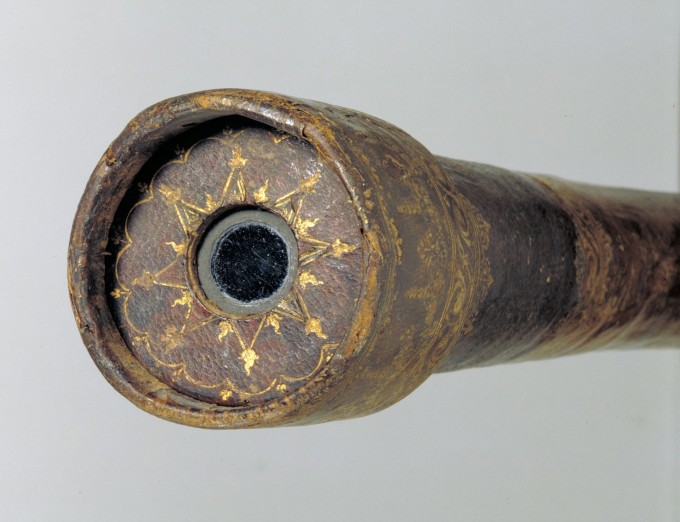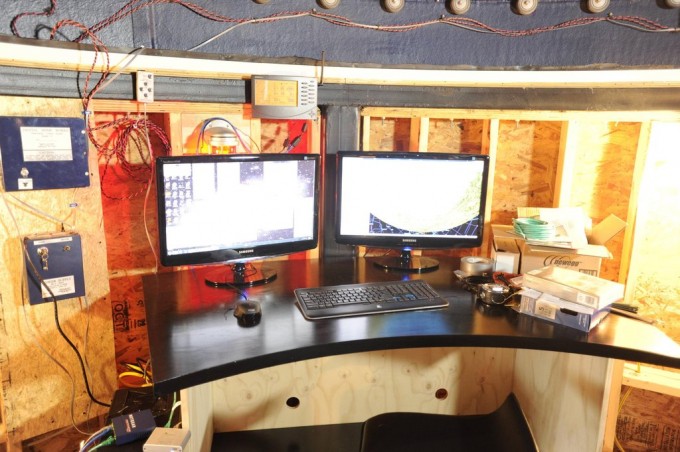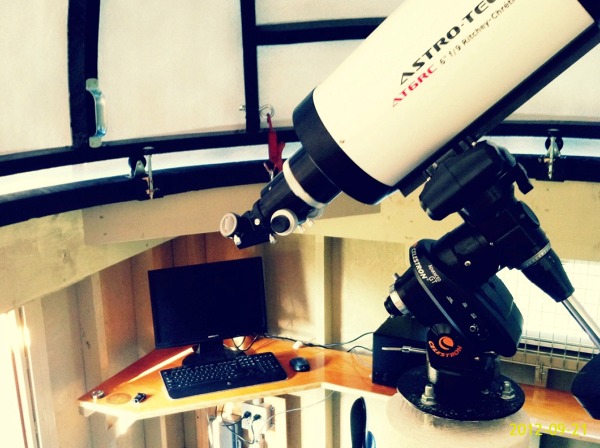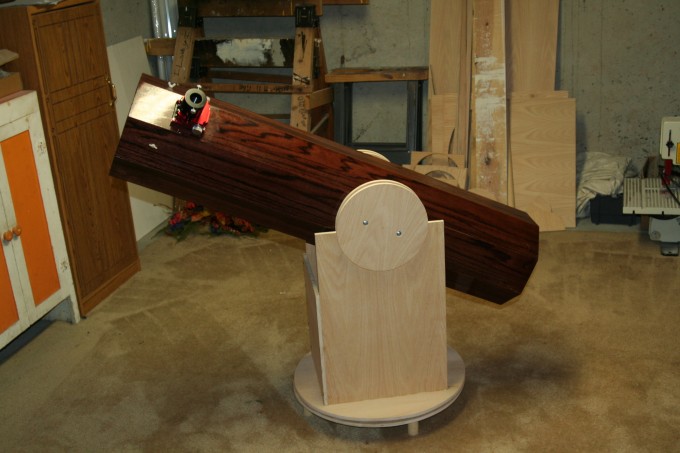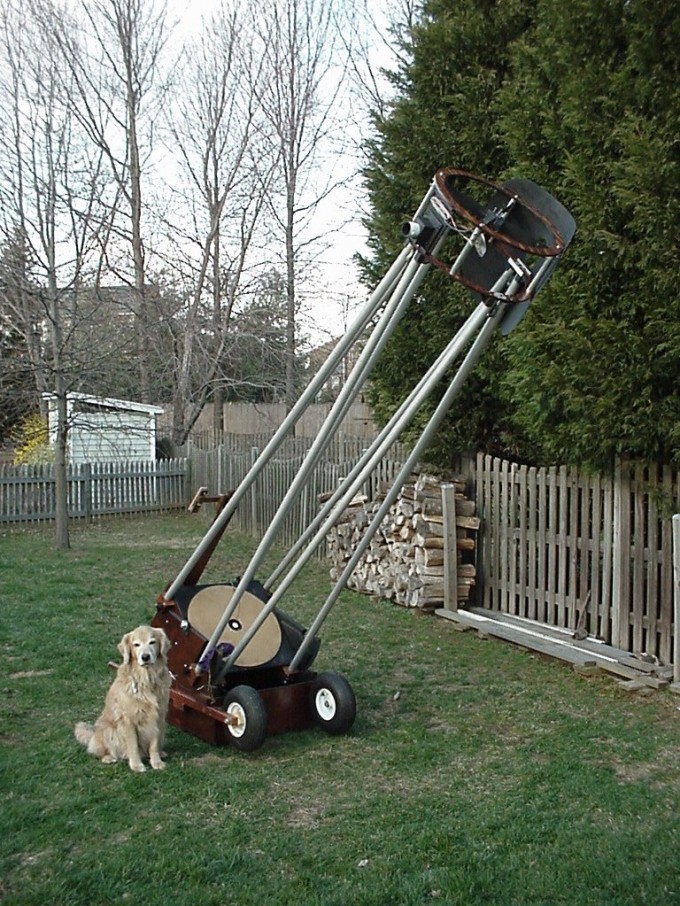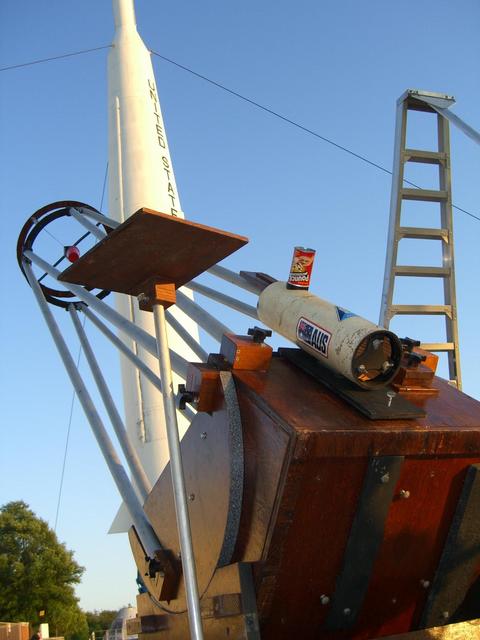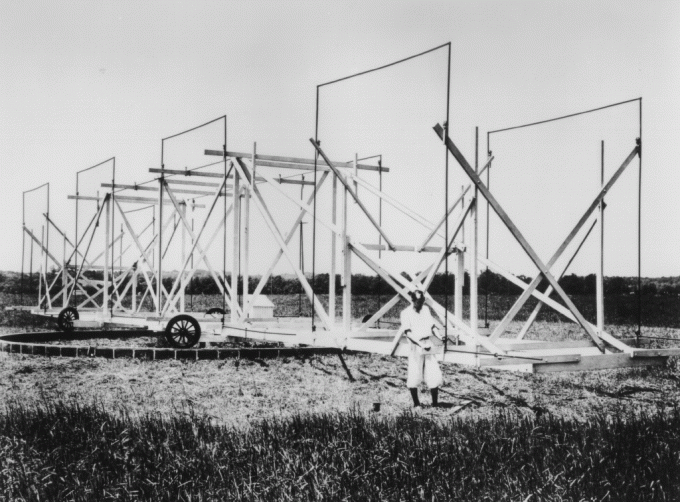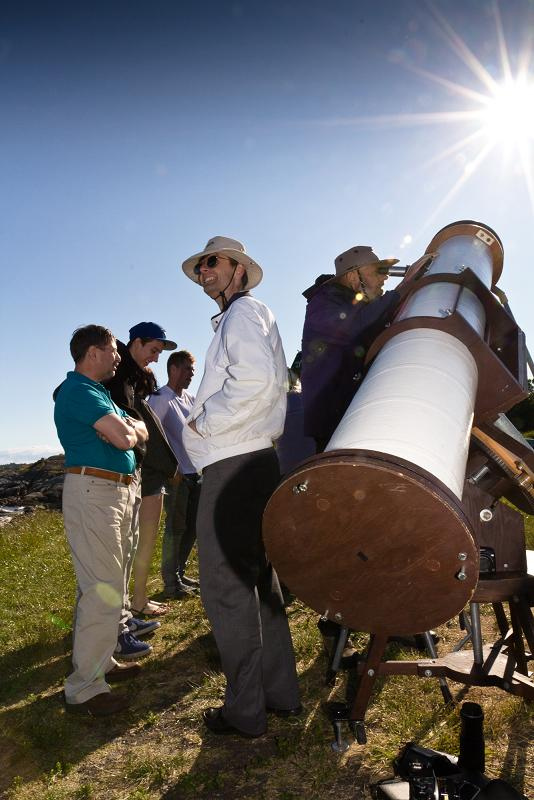In its essence, a telescope is an instrument that makes a far away
object look closer. To do this, a telescope has a device that collects
light from a distant object (objective lens or primary mirror) and
brings that light (image) to a focus where a second device (eyepiece
lens) magnifies the image and brings it to your eye. To make a simple
telescope at home, you will need the following:
- two magnifying glasses - perhaps 1 - 1.5 inches (2.5-3 cm) diameter (it works best if one is larger than the other)
- a cardboard tube - paper towel roll or gift-wrapping paper roll (it helps if it is long)
- duct tape
- scissors
- a ruler, yard stick, or tape measure
- sheet of printed paper - newspaper or magazine will do
- Get the two magnifying glasses and a sheet of printed paper.
- Hold one magnifying glass (the bigger one) between you and the paper. The image of the print will look blurry.
- Place the second magnifying glass between your eye and the first magnifying glass.
- Move the second glass forward or backward until the print comes into sharp focus. You will notice that the print appears larger and upside down.
- Have a friend measure the distance between the two magnifying glasses and write the distance down.
- Cut a slot in the cardboard tube near the front opening about an inch (2.5 cm) away. Do not cut all the way through the tube. The slot should be able to hold the large magnifying glass.
- Cut a second slot in the tube the same distance from the first slot as your friend wrote down. This is where the second magnifying glass will go.
- Place the two magnifying glasses in their slots (big one at front, little one at back) and tape them in with the duct tape
- Leave about 0.5 - 1 inch (1 - 2 cm) of tube behind the small magnifying glass and cut off any excess tube remaining.
- Check to see that it works by looking at the printed page. You may have to play slightly to get the exact distances between the two glasses right so that the image comes to a focus.


